Drinking a fresh juice each day as part of a whole food, plant-based lifestyle is a delicious way to ensure maximum nutrition for a healthy body full of energy.
You may have already established your daily juice practice, or you may be striving to stick with this new healthy habit.
When you are at home, and in control of your environment, it can be fairly easy to get your daily juice. But when you are away from home, juicing can be a challenge.
Fortunately, work trips and vacations don’t have to totally tank your healthy habit. With some careful planning you should be able to satisfy your craving for soul-satisfying, cell-nourishing, free-radical fighting fresh juice.
Option 1 – Take Your Juicer With You
If you are going on a road trip to a friend or family member’s house, you may be able to take your juicer with you. This can be a cost effective and practical choice, especially if you are going to be there for more than a few days.

Book a room with a kitchen or kitchenette.
If you will be staying in a hotel –
- Book a room with at least a kitchenette so that you will have a clean place to wash produce and clean your juicer when you’re done making juice.
- If there is no kitchenette, and you must use a bathroom sink (option of last resort) to clean your juicer, make sure you thoroughly disinfected the area beforehand and throughout your stay!
- Dispose of as much pulp as possible in the trash, as even a small amount of pulp can clog a drain.
- Make sure you bring a plastic cutting board, knife, and possibly a colander and bowl.
If you are traveling by plane, you may still be able to take your juicer with you –
- Pack carefully, cushioning the juicer with clothing.
- Make sure you pack a plastic cutting board and knife (check the bag if you pack a knife.)
- Make sure the bag does not exceed the weight limit.
- Buy mason jars (and a knife) at a local grocery store or Walmart at your destination.
A quick search on YouTube will net you many enterprising travelers sharing tips on how to pack along a juicer.
In his movie “Fat Sick & Nearly Dead,” Joe Cross traveled across the US with his juicer. He made it work.
Option 2 – Take Homemade Fresh Juice with You
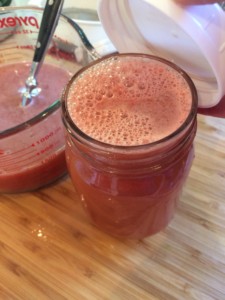
Fill your juice jars to the rim.
If taking your juicer and making fresh juice while you are away isn’t possible or practical, the next best thing would be to pack juices that you have made ahead.
- Fill your juice jars to the rim to reduce oxidation. (If freezing, allow 1/2″ head space.)
- Store your juice jars in a cooler packed with ice. Replace the ice regularly to keep the temperature as cold as possible.
- You can also pack jars of frozen juice which will serve as giant ice cubes, helping keep everything cold and extending the shelf life of your juice while traveling.
- Definitely include some lemon or lime juice in your green juices. The acid will help keep them fresher longer.
Of course, if you are traveling by plane, taking along fresh juice isn’t possible, so . . .
Option 3 – Buy Fresh Juice From a Juice Bar or Restaurant
Your next best bet is to buy freshly made raw juice from a juice bar, hotel kitchen, or restaurant. You may even find a new blend you love!
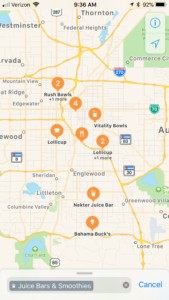
Use your Smartphone to find local juice bars.
Use your smartphone to find local juiceries.
- If you are already in your destination city, open Maps on your phone and type in “Juice Bars near me.” You may be surprised by the number of options available.
- If you are still planning your trip, enter the address of your hotel and search for juice bars and vegan restaurants nearby. Call them and ask about fresh juice and delivery. Juice bars will often make your juice and deliver it to your hotel, where the staff can put it in your refrigerator in your room. How’s that for easy?
Small grocery stores and “health food” stores will often have a small juice bar where you can order a fresh juice. So look up local grocery stores as well.
A quick check of the online menu at “salad bar” type restaurants may also surprise you with fresh juice available. Mad Greens, for instance, has large commercial centrifugal juicers for making juices on demand.
Don’t forget to ask the hotel staff if they know of a local juice bar or a place that serves freshly made juice. They may know just the place!
Option 4 – Buy an HPP Juice at a Grocery or Convenience Store
If you cannot find fresh, raw juice, your next best option would be a bottled cold-pressed juice that has been “high pressure processed,” known as HPP.
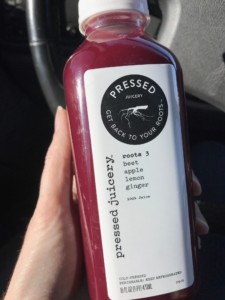
HPP juices retain much of their original nutrition.
This processing method uses very high pressure instead of heat to kill any possible unwanted microorganisms, like E.coli, Salmonella and Listeria. It also extends the shelf life to a few weeks instead of a few days.
While high pressure processing does have an effect on nutrient content, these juices are still packed with nutrition and are hands down better than most other beverage or processed snack options.
HPP juice is widely available with many brands to choose from. You’ll often see the phrase “high pressure processed,” “gently processed with high pressure,” “cold pressure protected,” or “cold pressured” on the bottle.
This labeling is not required, however, so if you don’t see anything stated, and it’s not “pasteurized” or “made from concentrate” you can assume it has been through HPP. Juice cannot be sold wholesale in the US without being treated.
Once you have found a bottle of HPP juice that you are interested in buying –
- A lot of commercially available juices are made for the general public, so the juices skew to the sweet side and contain more fruit than vegetable juice.
- Read the ingredient list in order to find one that is mostly vegetable juice with a little fruit instead of mostly fruit juice with very little vegetable.
- Juice ingredients are listed by weight with the highest weight ingredient listed first. So a juice that is “apple, cucumber, kale, lemon” is going to have more apple juice than a juice that is “cucumber, celery, apple, kale, lemon.”
Some good HPP juice brands include –
- Evolution Fresh (available at Starbucks)
- Pressed Juicery (nutritionally dense, low in sugar, available nationwide and my personal fave)
- Naked Pressed (the HPP sub-line, not the regular Naked Juice line)
- Pressery
- Suja
- Many, many more!
Beware of the nutrient deficient juices “made from concentrate.” These often masquerade as healthy, but they are no better than the heat pasteurized juices you probably grew up with as a kid. Juice has to be pasteurized before it can be concentrated, so when it is reconstituted the nutrition is pretty much gone.
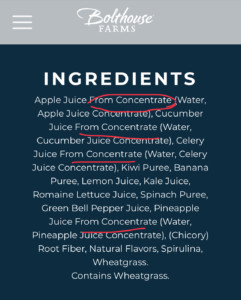
Avoid juices made “from concentrate.”
These juices to avoid include –
- Bolthouse Farms
- Naked Juice (regular line)
- Odwalla
- and others (read the back of the bottle)
You may as well leave these juices on the shelf and reach for a bottle of water or eat a piece of whole fruit instead.
With so many options, it should be possible to maintain your daily juice practice while away from home. But in some cases, you may not be able to find a decent juice to drink.
If so, don’t worry! Just make the best choice you can in the given situation.
While your body may be craving that juice, you can always eat whole fruit and vegetables – the true foundation of a healthy diet. Just do your best and get back on track when you return home.

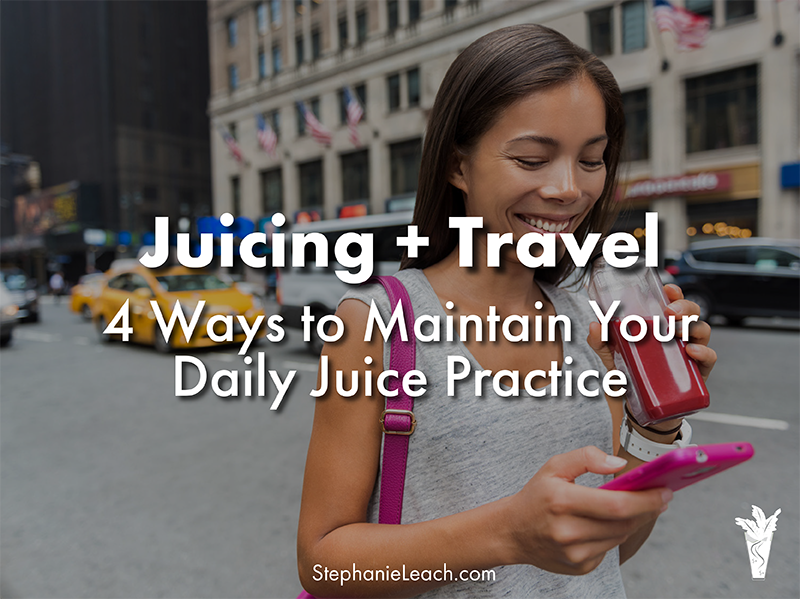
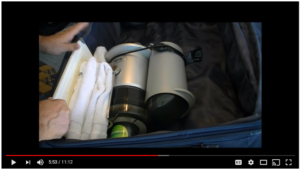


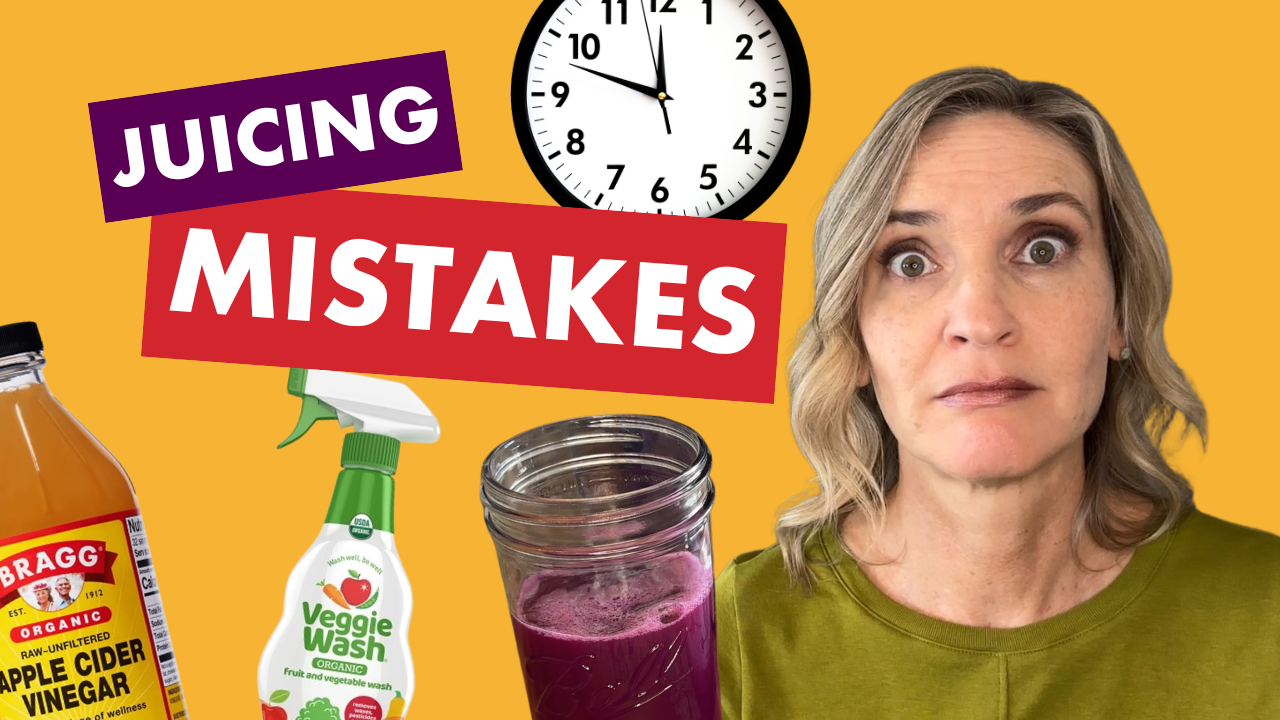
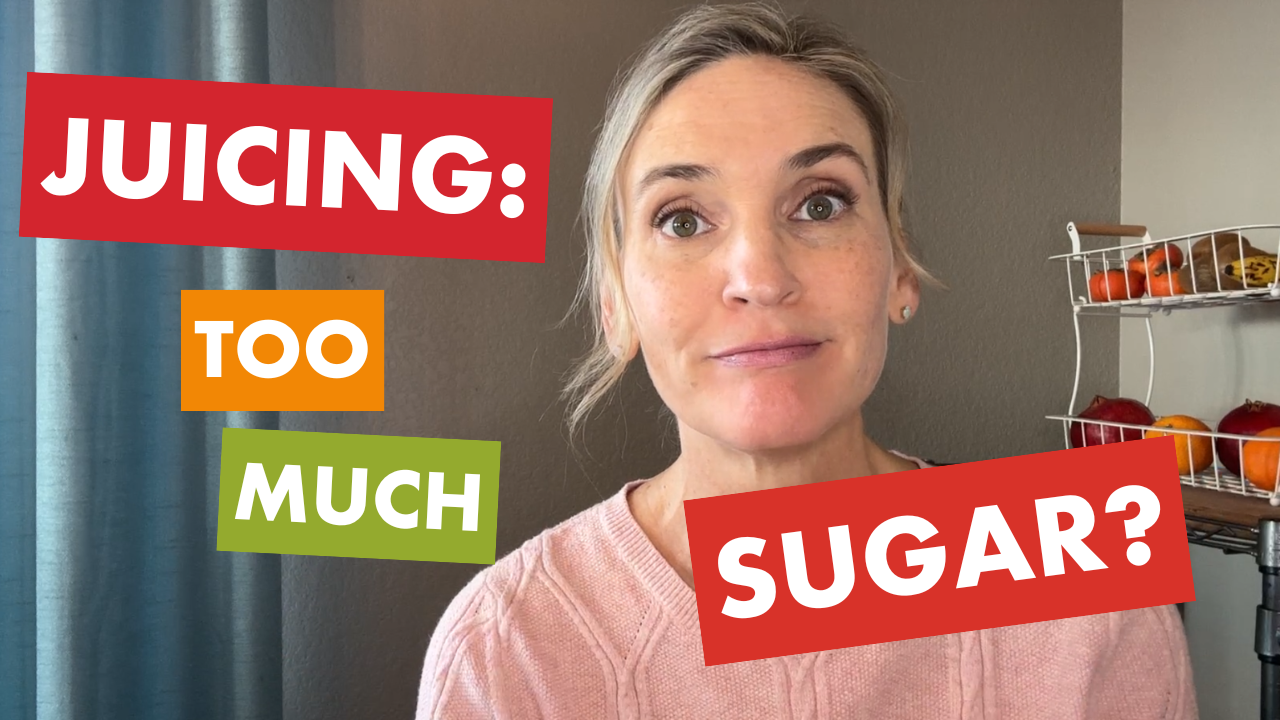


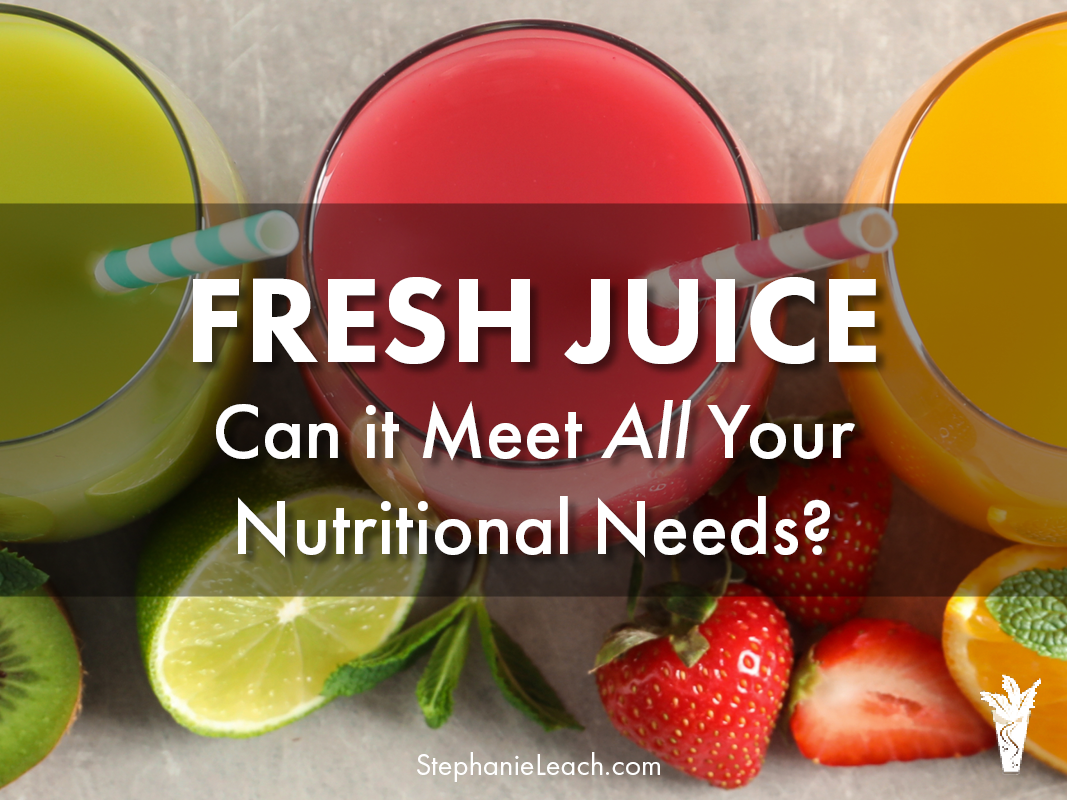
Leave A Comment